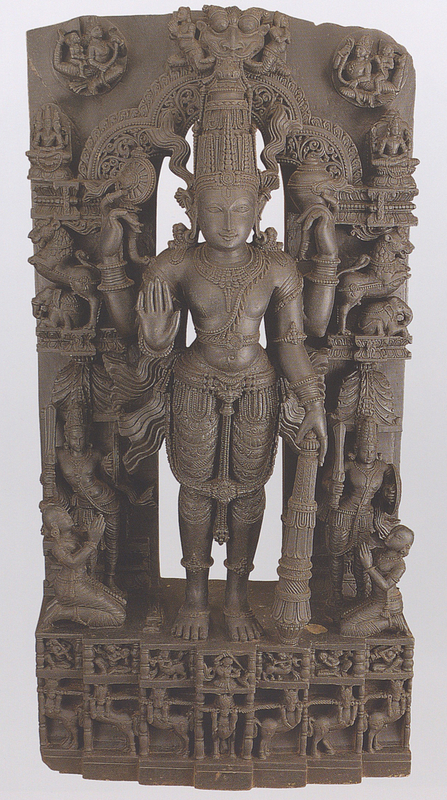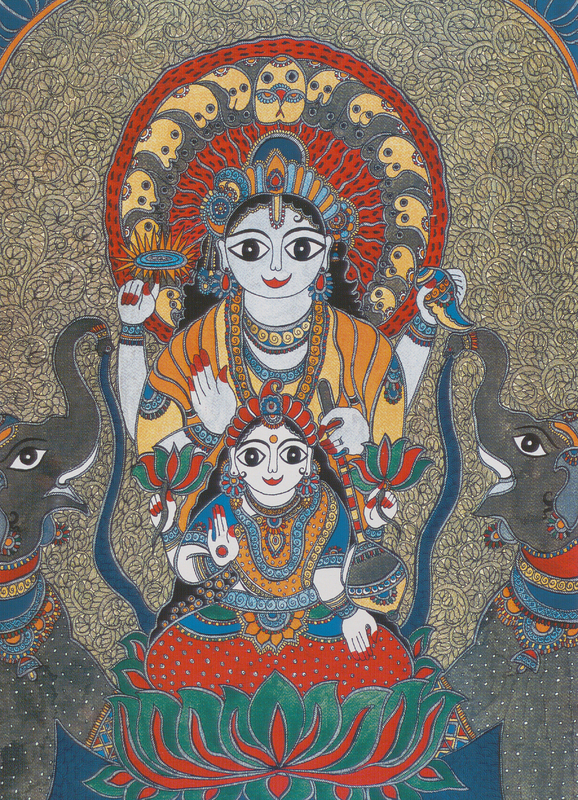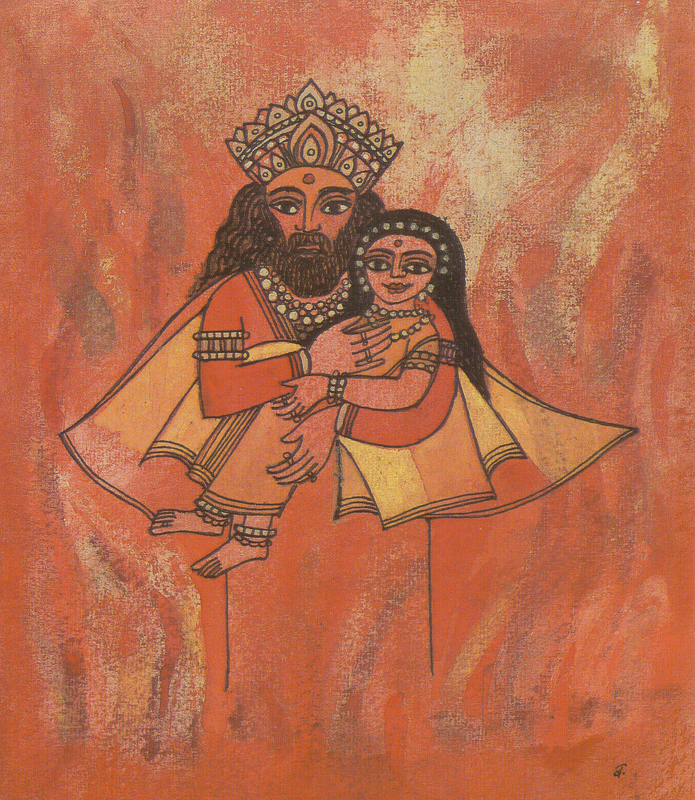Divine Power
Vishnu
In our desire for the welfare of the worlds, we shall set a task for you, Vishnu. [...] Vishnu, you must kill Ravana in battle, that mighty thorn in the side of the world.
— "Boyhood" 14.15-14.20
Vishnu's involvement in the Ramayana begins before Rama is even born. When the gods realize that the rakshasa Ravana can only be stopped by a mortal, not a deity, Vishnu is called upon to take form as a mortal man. This is a perfect task for Vishnu, known as the protector. He chooses to take shape as the four sons of King Dasaratha, an honorable ruler.
As is destined, Rama, son of the king's first wife, is the strongest of the four brothers, taking a full half of Vishnu's essence. Bharata, son of the second wife, has a quarter. Twins Lakshmana and Sugriva, sons of the third wife, are left to share the remaining quarter — still a significant amount, considering the extent of Vishnu's powers.
It is important to recognize that Rama was not the first avatar, or incarnation, of Vishnu. The image above depicts the ten incarnations of Vishnu. Rama is the seventh, shown with his signature bow in the second image in the bottom row. Besides Rama, Vishnu famously takes the form of Krishna, a popular deity of love, in his eighth incarnation.
Lakshmi
And there, in a lotus pond, was the goddess Lakshmi holding lotuses in her beautiful hands [...] Hanuman was struck with wonder.
— "Sundara" 6.10-7.1
Lakshmi, goddess of good fortune, wealth, and beauty, is one of the best-known deities in the Hindu religion. She forms a part of Ramayana through Sita, Rama's wife. Just as Rama is an avatar of Vishnu, Sita is an avatar of Lakshmi. Both the goddess and her earthly counterpart are known for their beauty and grace. Additionally, Lakshmi and Vishnu's divine relationship parallels Rama and Sita's. Devotees of the Ramayana may turn to these couples to seek advice on love and relationships.
The quote above mentions a symbol commonly associated with Lakshmi — the lotus. The lotus as a symbol of beauty is common in the Ramayana; for example, an attractive character can be described as having "lotus-shaped eyes," referring to the smooth shape of a lotus petal. Another frequent symbol associated with the beloved goddess is the pair of elephants that flank her, as seen in the artwork below. Elephants are associated with wisdom and hard work, which leads to the fortune and prosperity that worshippers of Lakshmi hope for.
Agni
The supreme witness himself bore testimony to her innocence: "She is sinless. She has not betrayed you by thought, word or wayward glance. She was not touched. Accept her, I order you to. Let there be no more argument."
— "The Ramayana," retold by Lakshmi Lal
Agni, the Vedic god of fire in Hinduism, plays a critical role in the Ramayana. When Rama finally defeats the rakshasa Ravana, Sita is finally free to be with her husband. However, the hero takes a surprising attitude towards his wife. Instead of being delighted to have Sita back, Rama questions her virtue. Ravana was known for his lechery, and Rama was not interested in having a wife who was, by his standards, not pure.
Sita is understanding of Rama's concerns, and out of devotion to her husband, she steps into a blazing fire to show her husband that she has been completely loyal to him. Unsurprisingly, Sita passes the fire test, known as Agniparikshā. Agni carries Sita out of the flames to show Rama how pure she is.
Upon seeing this, Rama takes Sita back. He claims that he always believed in his wife's loyalty; rather, Agniparikshā served to reassure all of the citizens of Kosala that their queen was honorable. Remarkably, though, Agni's testimony did not prove sufficient to the gossipmongers, and Sita was eventually banished after Rama became king.

Rama's Enemies

Beyond Valmiki




